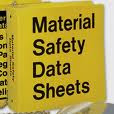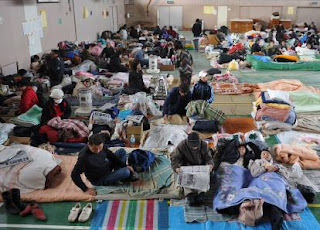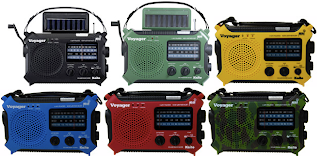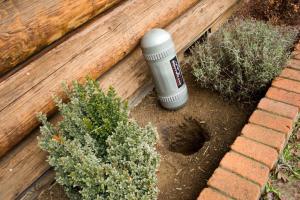If you like many others you are planning for an extended duration without access to food and you'd like to maintain a suitable variety of edible selections for a "stay in place" or stocked cabin somewhere.
In any event you will likely be wanting some meat products (unless you are an avowed vegan) to supplement the bark and twigs you stored up in your survival cache.
Dehydrated or freeze dried meat is fine, they are usually associated with an entree of some type but can be acquired in #10 cans of diced or chunked piece.
Problem is that these canned dried meats are now super expensive ($40-$60 per can) and there seems to be a 6 month waiting period from some suppliers. Once you open a large can of dried meat means you are likely to have to eat it all in a week or two according to the label. If you have a family that should be easy enough to do but if only 2 or less ell you might opt to vary the menu more
Note that a switch overnight to dehydrated foods from your normal diet may produce some unexpected gastrointestinal distress until your system eventually adjusts. That is why trying some of the various entrees ahead of time and on hiking trips is recommended. Try to incorporate that into one of your emergency drill weekends, no power, no luxuries and use some of your stored foods.
You are also going to need fat in your diet if you plan on being healthy long term so don't be storing up a ton of fat free food in your basement - you'll likely expire. Meats will provide those essential fats.
Enter longer term storage canned meats.
 |
| Keystone Pork |
As a component part of your stores you would want to have a familiar foodstuff that is easy to transition to and that can help flavor the diet extenders such as rice, pasta, soups and breads. We have tried some of the Amish canned meat products - often hard to get in quantity - but very good. We even found that the ground beef better than the average fair at the grocery store.
We recently tried the
Keystone Canned Pork. They are located in Lima Ohio...been there.
This product was processed for long term storage - at low temperature storage of 65 degrees or less we could safely say 5 years plus is easily accomplished - as we have eaten Dinty Moore Beef Stew well past expiration with no problems......it looked more like dog food but tasted okay.
Some canned foods have been consumed after 40 years of storage - but let's not push our luck.
This was simply prepared by heating in a skillet and adding some barbecue sauce (Jack Daniels) and the texture, flavor and appearance of the product was as described. In fact it looked so good we forgot we were testing it and ate it without first taking a picture of it in the skillet. Sorry. We'll get more and place a pic here.
 |
| Pork and Salt |
What you should consider is getting as much meat as you can afford to get (45-50lbs or equivalent per person per year of meat is a good rule) for you and your family considering the time frame you wish to prepare for. That is not a lot, but just enough to fulfill some dietary requirements for protein and fat.
We would suggest you get a variety of chicken, ground beef, beef chunks, turkey, pork and rotate the stock if you have a reliable source of this product. There also is nothing like real broth to extend your dishes even further. We noted the contents of the Keystone Food as nothing but meat, salt and the can. Having this flexibility in your meal preparation if you are sheltering in place, suffer a downsizing, long term disaster or ailment this is better than insurance.
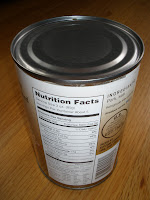 |
| Protein, Fat, Cholesterol |
Larger cans are good for larger families and smaller cans are good for 2 person homes - figure on having "company" of some sort during hard times and also in a severe situation you might need to barter a small can of meat for something else you may need more like medicine.
Food Rotation Tip:
Place the
Purchase Date on Can as "P" and the date -
P3-10-11
Write the
Expiration or Best if Eaten By date as -
X5-25-14
This will give you two reference points as to which cans to consume first.
Food prices are going to go up not down anytime soon - we found this on sale at
CampingSurvival.com and they have some recipes there as well.
We plan on testing the Broth and other meat selections next....if they are as good as the pork....this should be good eating.
